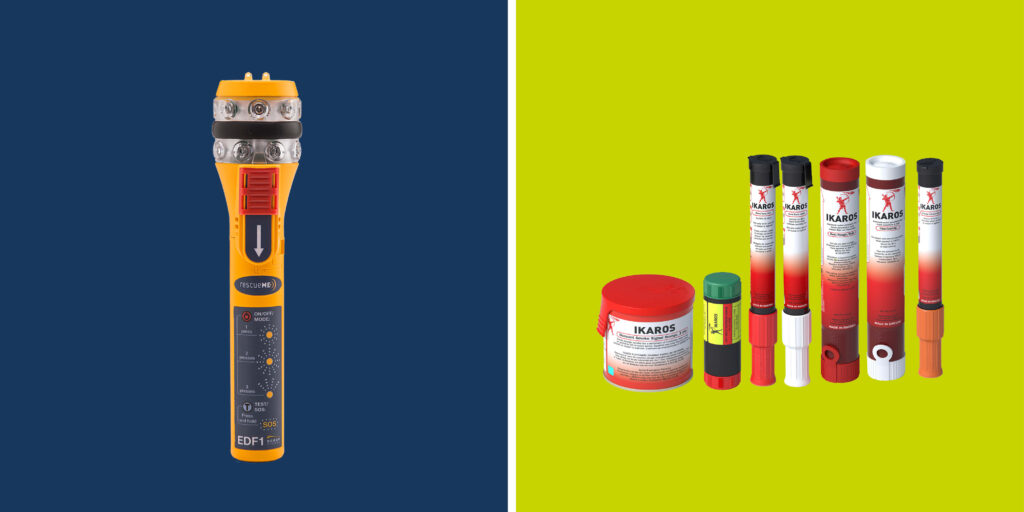From Alistair Hackett, Managing Director, Ocean Safety Ltd
While pyrotechnic flares have been used in varying forms for many centuries, the adoption of electronic flares by leisure boaters is a relatively recent trend. The ability to produce ultrapowerful electronic lighting has bred a range of highly visible LED light capabilities in the last few years.
The question is, which flare type is better and why – and how do you choose which to have on board?
The most obvious drawback of using pyrotechnic flares is that they are a potentially dangerous product which burn at up to 3000 degrees centigrade and, like any explosives, are difficult to dispose of. After typically a four year life, they can’t be thrown in the bin and it is also illegal to dump them at sea, so they must be taken to an official disposal depot, most of which charge a fee. Electronic flares, on the other hand, are safe and unlike pyrotechnics, which can only be used once, they can be switched on and off as needed.
Pyrotechnic flares, however, have characteristics which make them unmistakable as distress flares. A handheld smoke signal, including the orange daytime smoke signal, is not only extremely powerful but shows itself clearly as a distress flare, whereas an electronic light, however bright, might not be noticed, especially in a sea area of crowded traffic at night. Parachute flares, launched high into the sky can be highly visible from long distances and can be seen in the daylight too.
Of course, most distress signals nowadays are made via VHF or satellite communication. But pyrotechnics remain important to indicate a vessel’s location to search and rescue services – the parachute flare shows general location area while the handheld guides rescuers to the exact spot.
Pyrotechnics only burn for a short time, up to several minutes depending on the product, and this is where the LED flare has the advantage. The most advanced electronic flare available to leisure users today has a battery life of up to six hours constant use, and the battery is easy to replace. It still offers 360 degree visibility and can be seen for up to seven miles. It also has an SOS signalling – a signal which is still officially in use to avoid collisions – and is fully waterproof.
An electronic flare, however, cannot replace a red rocket flare, which can be seen for up to 28 miles, albeit for a short time.
It is worth knowing also that red rockets, handhelds and orange smoke are still the only recognised flare distress signals under maritime safety rules that comply with the international convention for Safety of Life at Sea (SOLAS) although this doesn’t apply to non-commercial users in vessels under 45ft (13.7m) in length.
If you are considering which option to keep on board for emergencies, there are pros and cons of each. Of course, if budget permits, both electronic and pyrotechnic have their advantages. A powerful electronic flare like the Ocean Signal RescueME EDF1 costs approx £110, while a set of flares such as the Hansson Ikaros Inshore Flare pack can cost around £70. A full range of flare products both electronic and traditional is available from Ocean Safety, view our range here.

